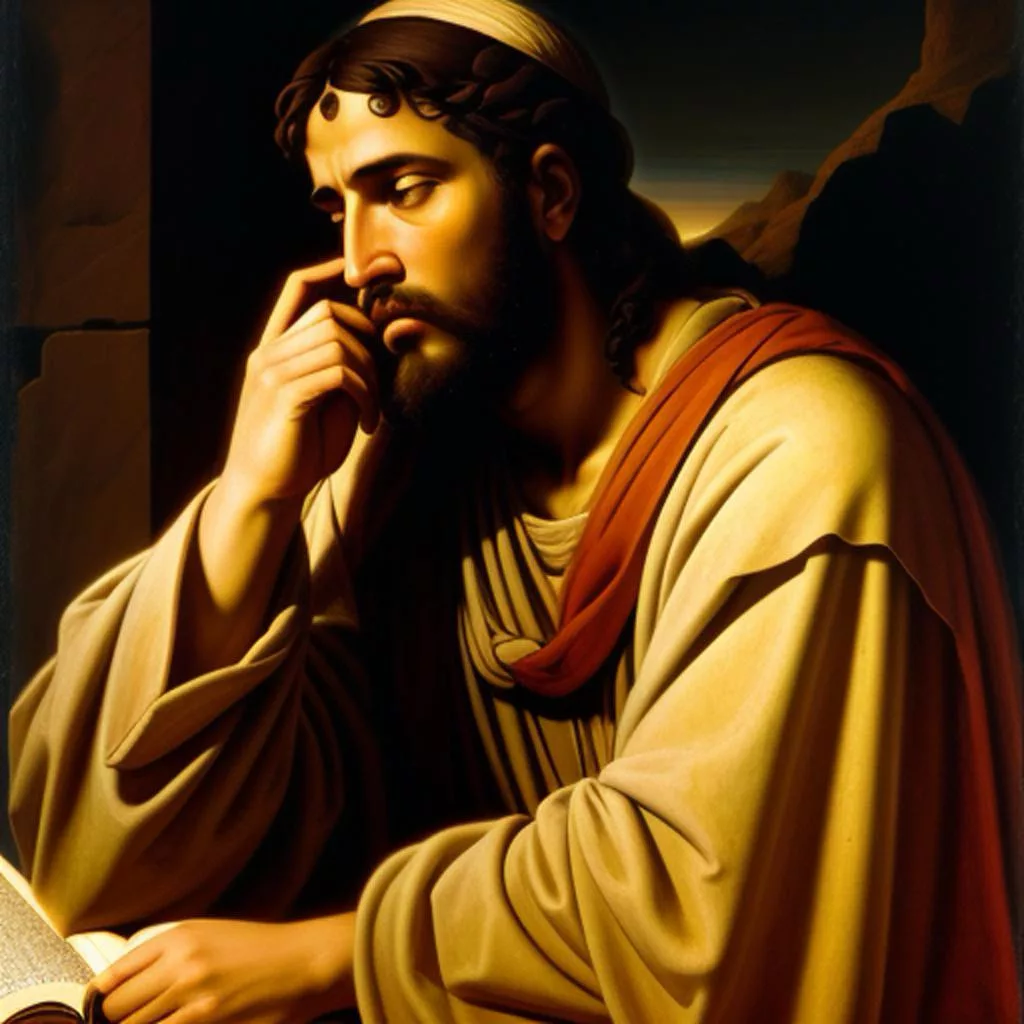Table of Contents
Questions about Joseph of Arimathea
Some additional questions regarding Joseph of Arimathea
What do historical sources outside of the Bible say about Joseph of Arimathea?
Outside of the New Testament accounts, there are limited historical sources specifically mentioning Joseph of Arimathea. The primary challenge in studying Joseph of Arimathea from non-biblical sources is the lack of direct references to him. However, there are some indirect references and later traditions that mention figures who may correspond to Joseph of Arimathea:
- Early Christian Writings: Some early Christian writings outside of the New Testament, such as apocryphal texts and patristic writings, mention Joseph of Arimathea. These sources often elaborate on the biblical narrative or incorporate additional details, but they are not considered historical in the same sense as contemporary records.
- Medieval Legends: Later medieval legends and traditions, particularly those associated with the Grail Quest and Arthurian mythology, often incorporate Joseph of Arimathea into their narratives. These legends, while not historically reliable, reflect the enduring cultural and religious significance of Joseph of Arimathea in Christian folklore.
- Church Tradition: The veneration of Joseph of Arimathea as a saint in certain Christian traditions has contributed to his continued recognition and prominence within the Church. However, these traditions are based more on religious devotion than historical documentation.
While there are some references to Joseph of Arimathea in non-biblical sources, they must be approached with caution and are typically interpreted within the context of religious tradition and mythology rather than historical fact.
Are there any conflicting accounts or controversies surrounding Joseph of Arimathea’s role in the burial of Jesus?
While the New Testament Gospels generally present Joseph of Arimathea as the individual who took charge of burying Jesus after his crucifixion, there are some differences and potential controversies surrounding this account:
- Consistency Across Gospels: The Gospel accounts of Matthew, Mark, Luke, and John generally agree that Joseph of Arimathea was involved in the burial of Jesus. However, there are variations in the details provided by each Gospel writer, such as the specific timing of Joseph’s involvement and the role of other individuals, like Nicodemus.
- Criticism and Skepticism: Some scholars have raised questions about the historical accuracy of the Gospel accounts regarding Joseph of Arimathea. Critics argue that the Gospels were written several decades after the events they describe and may have been influenced by theological concerns or later traditions.
- Alternative Theories: In the absence of corroborating historical evidence outside of the Gospels, alternative theories about the burial of Jesus have been proposed. For example, some scholars have suggested that Jesus was buried in a common grave rather than a tomb belonging to Joseph of Arimathea.
- Theological Significance: Despite these debates and uncertainties, Joseph of Arimathea’s role in the burial of Jesus carries significant theological and symbolic weight in Christian tradition. It is seen as fulfilling prophecies from the Hebrew Scriptures and emphasizing Jesus’ identification with the marginalized and oppressed, as Joseph was a member of the Sanhedrin who opposed the decision to crucify Jesus.
While there may be variations and controversies surrounding the accounts of Joseph of Arimathea’s role in the burial of Jesus, his significance within Christian tradition remains profound, reflecting themes of redemption, sacrifice, and divine providence.
How has Joseph of Arimathea been portrayed in art and literature throughout history?
Joseph of Arimathea has been depicted in various forms of art and literature over the centuries, reflecting his significance within Christian tradition and mythology. Some common portrayals include:
- Religious Art: In Christian religious art, Joseph of Arimathea is often depicted as a dignified and wealthy figure, dressed in robes befitting his status. He is typically shown alongside other biblical figures involved in the crucifixion and burial of Jesus, such as Nicodemus and the Virgin Mary. Artworks portraying the Descent from the Cross or the Entombment frequently include Joseph of Arimathea.
- Medieval Manuscripts: Illuminated manuscripts from the medieval period often depict scenes from the life of Christ, including his burial by Joseph of Arimathea. These illustrations can be found in religious texts, such as Gospel books and Psalters, as well as in the margins of liturgical manuscripts.
- Arthurian Legend: In Arthurian literature and legend, Joseph of Arimathea is often associated with the Holy Grail and the Quest for the Grail. He is sometimes depicted as the guardian of the Holy Grail or as a figure who brings the Grail to Britain. These portrayals emphasize Joseph’s mystical and spiritual significance beyond his biblical role.
- Mystery Plays and Dramas: During the medieval period, mystery plays and religious dramas were popular forms of entertainment that depicted biblical stories and religious themes. Joseph of Arimathea frequently appeared as a character in these plays, particularly in scenes depicting the crucifixion and burial of Jesus.
- Literary Works: Joseph of Arimathea has been featured in various literary works, both religious and secular. In addition to Arthurian literature, he appears in works of Christian fiction and historical novels that explore biblical themes and characters. Authors have often drawn on biblical accounts, apocryphal texts, and later traditions to create fictionalized portrayals of Joseph of Arimathea.
The portrayal of Joseph of Arimathea in art and literature reflects the enduring significance of his role in the biblical narrative and his broader cultural and spiritual significance within Christian tradition. His depiction has evolved over time, influenced by theological interpretations, artistic conventions, and literary motifs.

Are there any traditions or customs associated with Joseph of Arimathea in Christian communities or religious practices?
While there aren’t as many specific traditions or customs associated with Joseph of Arimathea compared to some other biblical figures, he does hold significance within certain Christian communities and religious practices. Here are a few examples:
- Veneration as a Saint: In some Christian traditions, particularly within the Roman Catholic and Eastern Orthodox Churches, Joseph of Arimathea is venerated as a saint. Feast days commemorating Joseph of Arimathea may be observed in liturgical calendars, although the dates can vary among different Christian denominations and regions.
- Pilgrimage Sites: Locations associated with Joseph of Arimathea, such as Glastonbury in England, may become pilgrimage sites for Christians seeking to connect with his legacy and the broader Christian tradition. Pilgrims may visit these sites to pray, reflect, and participate in religious rituals or services.
- Holy Week Observances: During Holy Week, the week leading up to Easter Sunday, many Christian communities commemorate the events of Jesus’ Passion, including his crucifixion and burial. Joseph of Arimathea’s role in the burial of Jesus may be highlighted during Holy Week services, particularly on Good Friday.
- Artistic Depictions: As mentioned earlier, Joseph of Arimathea is frequently depicted in religious art, particularly scenes depicting the crucifixion, burial, and resurrection of Jesus. Artistic representations of Joseph of Arimathea may serve as focal points for meditation and contemplation within Christian worship spaces.
- Symbolic Associations: Joseph of Arimathea’s actions, particularly his provision of a tomb for the burial of Jesus, carry symbolic significance within Christian theology and spirituality. His generosity, courage, and compassion exemplify virtues that Christians seek to emulate in their own lives.
While Joseph of Arimathea may not be as prominent in religious customs and traditions as some other biblical figures, his role in the burial of Jesus and his broader significance within Christian tradition continue to be recognized and honored by believers around the world.
What significance does Joseph of Arimathea hold in Christian theology and doctrine?
Joseph of Arimathea holds several theological and doctrinal significances within Christian tradition:
- Fulfillment of Prophecy: The Gospel accounts emphasize Joseph of Arimathea’s role in fulfilling Old Testament prophecies regarding the Messiah’s burial. For example, Isaiah 53:9 prophesies that the Messiah would be buried in a rich man’s tomb, which is seen as fulfilled through Joseph’s provision of his own tomb for Jesus’ burial.
- Identification with Jesus’ Death and Resurrection: Joseph’s association with the burial of Jesus links him closely to the events of Jesus’ death and resurrection, which are central tenets of Christian faith. His actions underscore the reality of Jesus’ death and the hope of his eventual resurrection, which are foundational to Christian theology.
- Model of Compassion and Devotion: Joseph of Arimathea’s courageous act of requesting Jesus’ body from Pontius Pilate and providing a proper burial despite potential risks demonstrates compassion, devotion, and fidelity to Jesus. Christians may see Joseph as a model of discipleship and selflessness.
- Connection to the Early Church: Joseph of Arimathea’s prominence in the Gospel accounts highlights the involvement of prominent individuals, including members of the Sanhedrin, in the events surrounding Jesus’ crucifixion and resurrection. His conversion to following Jesus and his subsequent actions illustrate the early spread of Christianity and the diverse backgrounds of its followers.
- Symbol of Redemption and Salvation: Joseph of Arimathea’s role in the burial of Jesus is often interpreted symbolically as part of the broader narrative of redemption and salvation. His provision of the tomb and participation in Jesus’ burial symbolize the reconciliation between God and humanity made possible through Jesus’ sacrificial death and victorious resurrection.
While Joseph of Arimathea may not receive as much theological emphasis as other biblical figures such as Jesus, Mary, or the apostles, his actions and significance within the Gospel accounts contribute to key theological themes and doctrines within Christian faith.
Are there any archaeological or historical findings that shed light on the existence or identity of Joseph of Arimathea?
While there are no direct archaeological or historical findings that conclusively confirm the existence or identity of Joseph of Arimathea, archaeological excavations and research have provided insights into the broader historical context of the New Testament period and the region where Joseph is believed to have lived.
- Tombs and Burial Practices: Archaeological discoveries in the region of Judea and Jerusalem have shed light on ancient burial practices during the time of Jesus. Excavations of tombs and burial sites have revealed insights into the types of tombs used by wealthy individuals, such as rock-cut tombs similar to the one traditionally associated with Joseph of Arimathea.
- Ossuaries and Inscriptions: Ossuaries, or bone boxes, have been discovered in ancient Jewish burial sites, some of which bear inscriptions with names similar to “Joseph” or “Arimathea.” While these findings do not directly prove the existence of Joseph of Arimathea, they provide evidence of naming conventions and burial customs during the time period.
- Historical Context: Historical research into the social, political, and religious context of first-century Judea provides background information that helps contextualize the biblical accounts of Joseph of Arimathea. This research includes studies of Jewish religious sects, such as the Pharisees and the Sanhedrin, to which Joseph is said to have belonged.
- Literary and Documentary Evidence: Apart from the New Testament accounts, there are limited references to Joseph of Arimathea in other ancient texts. For example, some early Christian writings and traditions mention Joseph in connection with the burial of Jesus and the spread of Christianity.
While these archaeological and historical findings do not offer direct proof of Joseph of Arimathea’s existence, they contribute to our understanding of the cultural, religious, and social milieu of the biblical world. The figure of Joseph of Arimathea remains primarily known through the biblical accounts, and his historicity continues to be a subject of scholarly debate and inquiry.
How has the story of Joseph of Arimathea influenced Christian pilgrimage sites or sacred places?
The story of Joseph of Arimathea’s involvement in the burial of Jesus and his subsequent association with sacred sites has had a significant impact on Christian pilgrimage and the development of sacred places. Here are some ways in which his story has influenced pilgrimage sites:
- Glastonbury Abbey: Perhaps the most prominent example is Glastonbury Abbey in Somerset, England. According to tradition, Joseph of Arimathea traveled to Britain, bringing with him the Holy Grail and planting his staff in Glastonbury, where it miraculously grew into a thorn tree. This legend has made Glastonbury Abbey a major pilgrimage site for Christians seeking to connect with Joseph’s legacy and the broader Christian tradition.
- Jerusalem: In Jerusalem, various sites associated with Jesus’ burial and resurrection, including the Church of the Holy Sepulchre and the Garden Tomb, attract pilgrims from around the world. While Joseph of Arimathea is not the central focus of pilgrimage to these sites, his role in the burial of Jesus contributes to their significance within Christian tradition.
- Arthurian Legends: In Arthurian legend, Joseph of Arimathea is often associated with the Holy Grail and various quests undertaken by knights seeking this sacred relic. While these legends are more fictional than historical, they have contributed to the creation of pilgrimage routes and sacred sites associated with Arthurian mythology, particularly in Britain and France.
- Medieval Pilgrimage Routes: During the Middle Ages, pilgrimage routes such as the Camino de Santiago in Spain and the Via Francigena in Italy facilitated travel to sacred sites associated with biblical figures, saints, and miracles. While Joseph of Arimathea may not have been the primary focus of these routes, his story would have been known to medieval pilgrims and could have influenced their journey.
- Local Traditions: In addition to major pilgrimage destinations, local traditions and folklore in regions associated with Joseph of Arimathea may have led to the development of smaller pilgrimage sites or shrines dedicated to him. These sites often reflect the unique cultural and religious heritage of their respective communities.
Overall, the story of Joseph of Arimathea has played a role in shaping Christian pilgrimage and the veneration of sacred sites, both within the Holy Land and beyond. His association with burial customs, sacred relics, and legendary quests has contributed to the diversity and richness of Christian pilgrimage traditions.

What parallels or similarities exist between Joseph of Arimathea and other figures in religious or mythological traditions?
While Joseph of Arimathea is primarily known within the context of Christian tradition, there are parallels and similarities between his story and that of other figures in religious or mythological traditions. Here are a few examples:
- Burial Customs: The act of providing a proper burial for a deceased individual is a theme found in various religious and mythological traditions around the world. In ancient Egyptian mythology, for example, the god Osiris is associated with death and resurrection, and his body was ritually prepared and buried by his wife Isis. Similarly, in Greek mythology, the hero Achilles is accorded a proper burial after his death in the Trojan War.
- Messianic Figures: Joseph of Arimathea’s role in the burial of Jesus and his association with messianic prophecies bear similarities to other figures in religious traditions who are believed to play a role in the coming of a savior or divine figure. In Jewish tradition, for instance, figures such as Elijah and Moses are associated with the coming of the Messiah. In Hinduism, various avatars or incarnations of the god Vishnu are believed to fulfill prophecies and bring salvation to humanity.
- Quests and Journeys: The legends surrounding Joseph of Arimathea’s journey to Britain and his association with the Holy Grail share similarities with other quest narratives found in mythology and folklore. In Arthurian legend, for example, knights embark on quests to seek the Holy Grail, a sacred relic associated with the Last Supper. Similar quest motifs can be found in other mythological traditions, such as the search for the Golden Fleece in Greek mythology or the quest for enlightenment in Buddhist tradition.
- Symbolic Role: Like many figures in religious and mythological traditions, Joseph of Arimathea often serves a symbolic role, embodying themes of redemption, sacrifice, and renewal. His actions and attributes may resonate with archetypal motifs found in other cultural narratives, even if the specific details of his story are unique to Christian tradition.
While these parallels and similarities may highlight universal themes and motifs present in human storytelling and religious expression, it’s important to recognize the distinctiveness of Joseph of Arimathea’s role within the Christian narrative and his specific significance within Christian theology and tradition.
Are there any modern-day organizations or groups dedicated to studying or venerating Joseph of Arimathea?
While there may not be specific organizations solely dedicated to studying or venerating Joseph of Arimathea, there are Christian communities, scholarly groups, and religious institutions that engage with his story and its significance within Christian tradition. Here are a few examples:
- Religious Orders and Societies: Within Christian denominations such as the Roman Catholic Church, the Eastern Orthodox Church, and Anglicanism, there may be religious orders, monastic communities, or societies that venerate saints, including Joseph of Arimathea, through prayers, liturgical celebrations, or devotional practices.
- Academic Institutions: Scholars and researchers in the fields of biblical studies, theology, and religious history may study Joseph of Arimathea as part of their broader research into the New Testament, early Christianity, or the historical Jesus. Academic institutions with programs in religious studies or biblical archaeology may offer courses or conduct research related to Joseph of Arimathea.
- Pilgrimage Organizations: Organizations that facilitate Christian pilgrimage, such as pilgrimage tour companies or pilgrimage centers, may include sites associated with Joseph of Arimathea as part of their itineraries. These organizations may provide resources, guidance, and support for individuals and groups undertaking pilgrimages to sacred sites.
- Local Churches and Parishes: Many local churches and parishes within Christian communities may incorporate the story of Joseph of Arimathea into their worship services, educational programs, or outreach activities. Clergy, pastors, and religious educators may teach about Joseph of Arimathea as part of their ministry.
- Historical and Cultural Societies: In regions associated with Joseph of Arimathea, such as Glastonbury in England, there may be historical societies, cultural organizations, or heritage groups that preserve and promote local traditions, folklore, and legends related to Joseph and other historical figures.
While there may not be formal organizations exclusively dedicated to studying or venerating Joseph of Arimathea, his story remains an integral part of Christian tradition and continues to be explored, interpreted, and celebrated by individuals and communities around the world.
How does Joseph of Arimathea’s story intersect with broader themes or narratives in the New Testament or Christian tradition?
Joseph of Arimathea’s story intersects with several broader themes and narratives in the New Testament and Christian tradition, contributing to the richness and depth of Christian theology and spirituality. Here are some key intersections:
- Redemption and Salvation: Joseph of Arimathea’s role in providing a burial for Jesus after his crucifixion reflects themes of redemption and salvation central to Christian faith. His actions symbolize the compassion and grace extended to humanity through Jesus’ sacrificial death and resurrection.
- Divine Providence: Joseph of Arimathea’s unexpected act of courage and compassion in requesting Jesus’ body from Pontius Pilate and providing a tomb for his burial underscores the theme of divine providence. Despite the tragic circumstances of Jesus’ death, God’s plan for salvation is fulfilled through the actions of individuals like Joseph.
- Liminal Figures and Conversion: Joseph of Arimathea’s conversion to following Jesus, as depicted in the Gospels, highlights the transformative power of encountering Christ. He represents a liminal figure—a member of the Jewish elite who becomes a follower of Jesus—illustrating the inclusivity and universality of God’s redemptive work.
- Servant Leadership: Joseph of Arimathea’s willingness to risk his reputation and social standing to honor Jesus in his death exemplifies the concept of servant leadership taught by Jesus. His humble service and selfless devotion stand in contrast to the power dynamics of the Roman authorities and religious leaders of his time.
- Witness to Resurrection: Joseph of Arimathea’s role in the burial of Jesus positions him as a witness to the resurrection, as depicted in the Gospel narratives. His encounter with the risen Christ, along with the other women and disciples who visit the empty tomb, becomes a foundational aspect of Christian testimony and proclamation.
- Community of Believers: Joseph of Arimathea’s inclusion in the Gospel accounts highlights the diversity of individuals who encountered Jesus during his ministry and became part of the early Christian community. His story reminds believers of the varied backgrounds and roles of those who responded to the message of Christ.
Overall, Joseph of Arimathea’s story intersects with broader theological themes of redemption, providence, conversion, and witness, enriching the Christian narrative and providing insight into the complexities of faith and discipleship. His example continues to inspire believers to embody compassion, courage, and faithfulness in their own lives.
Resumed in a table
| Question | Response |
| What do historical sources outside of the Bible say about Joseph of Arimathea? | Limited outside biblical sources; early Christian writings and later medieval legends mention Joseph of Arimathea but are not considered historical in the same sense as contemporary records. |
| Are there any conflicting accounts or controversies surrounding Joseph of Arimathea’s role in the burial of Jesus? | Variations across Gospel accounts; some scholars question historical accuracy due to theological concerns; alternative theories proposed; theological significance remains profound. |
| How has Joseph of Arimathea been portrayed in art and literature throughout history? | Depicted in religious art, illuminated manuscripts, Arthurian legend, mystery plays, and literary works; often shown in scenes of Jesus’ burial or as a guardian of the Holy Grail in Arthurian literature. |
| Are there any traditions or customs associated with Joseph of Arimathea in Christian communities or religious practices? | Venerated as a saint in some Christian traditions; pilgrimage to sites associated with Joseph, such as Glastonbury Abbey; remembered during Holy Week observances; depicted in religious art; serves as a symbol of compassion, devotion, and redemption. |
| What significance does Joseph of Arimathea hold in Christian theology and doctrine? | Fulfills prophecies regarding Messiah’s burial; links closely to events of Jesus’ death and resurrection; exemplifies compassion and devotion; associated with the early spread of Christianity; symbolizes redemption and salvation. |
| Are there any archaeological or historical findings that shed light on the existence or identity of Joseph of Arimathea? | Limited direct evidence; archaeological discoveries provide insights into burial practices and historical context of New Testament period; ossuaries and inscriptions hint at naming conventions; historical context contributes to understanding. |
| How has the story of Joseph of Arimathea influenced Christian pilgrimage sites or sacred places? | Associated with pilgrimage sites such as Glastonbury Abbey and sites in Jerusalem; figures prominently in Arthurian legends and quest narratives; inspires pilgrimage routes and local traditions; contributes to diversity of Christian pilgrimage experiences. |
| What parallels or similarities exist between Joseph of Arimathea and other figures in religious or mythological traditions? | Shares themes of burial customs, messianic figures, quests, and symbolic significance with other religious and mythological figures; serves as a liminal figure and embodies servant leadership; intersects with broader theological narratives. |
| Are there any modern-day organizations or groups dedicated to studying or venerating Joseph of Arimathea? | No specific organizations solely dedicated; Joseph venerated through religious orders, academic institutions, pilgrimage organizations, local churches, and historical societies; his story explored, interpreted, and celebrated by individuals and communities. |
| How does Joseph of Arimathea’s story intersect with broader themes or narratives in the New Testament or Christian tradition? | Intersects with themes of redemption, divine providence, conversion, servant leadership, witness to resurrection, and community of believers; enriches Christian narrative and provides insight into complexities of faith and discipleship. |
This table summarizes our discussion on Joseph of Arimathea, covering various aspects of his story, significance, and influence within Christian tradition and beyond.
Thank you for reading, shares and comments!
✨ Comment Policy ✨
We welcome thoughtful, kind, and constructive comments that contribute to meaningful conversations.
Please note:
- Promotional links and unsolicited offers will be removed.
- Spam, irrelevant content, or self-promotion without prior permission will not be published.
- We value quality engagement over quantity — thank you for helping us keep this a respectful and inspiring space!
Sources openai Language models, aitrot, picsart and mib
Take time to learn
Invest in your future
Embark on a journey into the realm of affiliate marketing and craft your own website within a vibrant, supportive community. Join me in this adventure, where you can begin as a free starter and stay as long as you desire. Enjoy complimentary hosting and foundational teachings to set you on your path. For those with advanced skills, opportunities to elevate your expertise await. Take a moment to explore and witness the magic for yourself!




